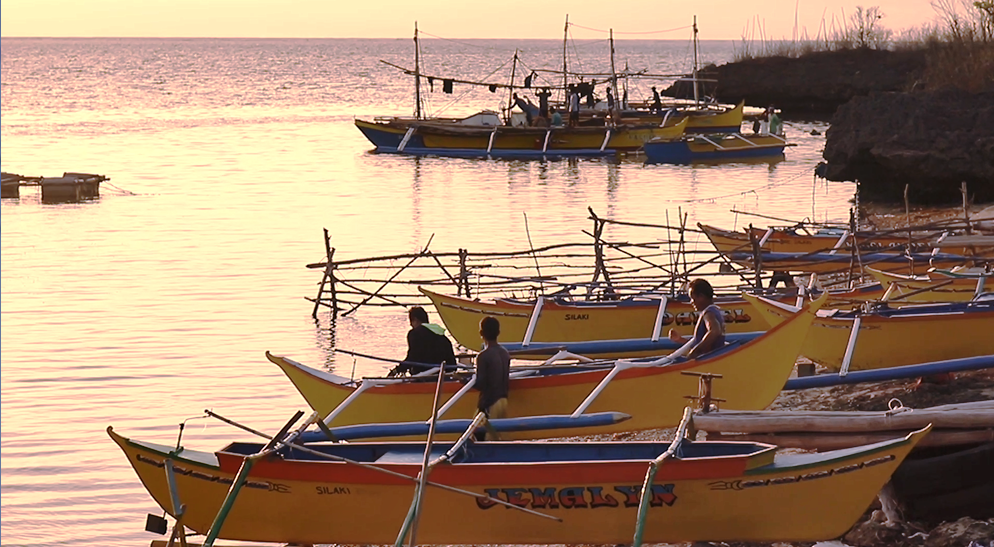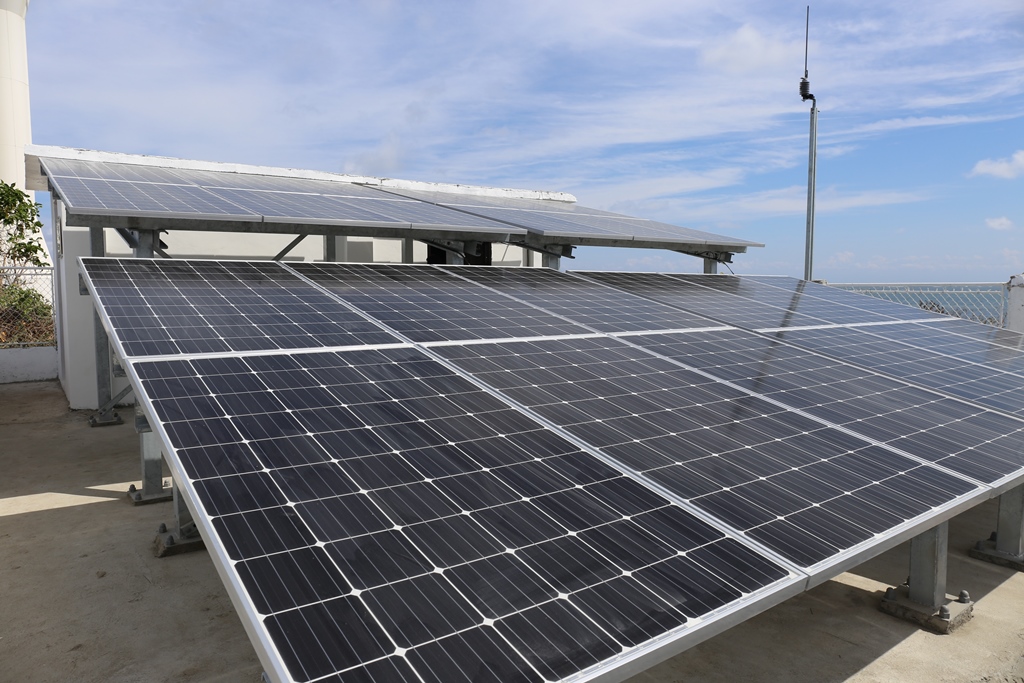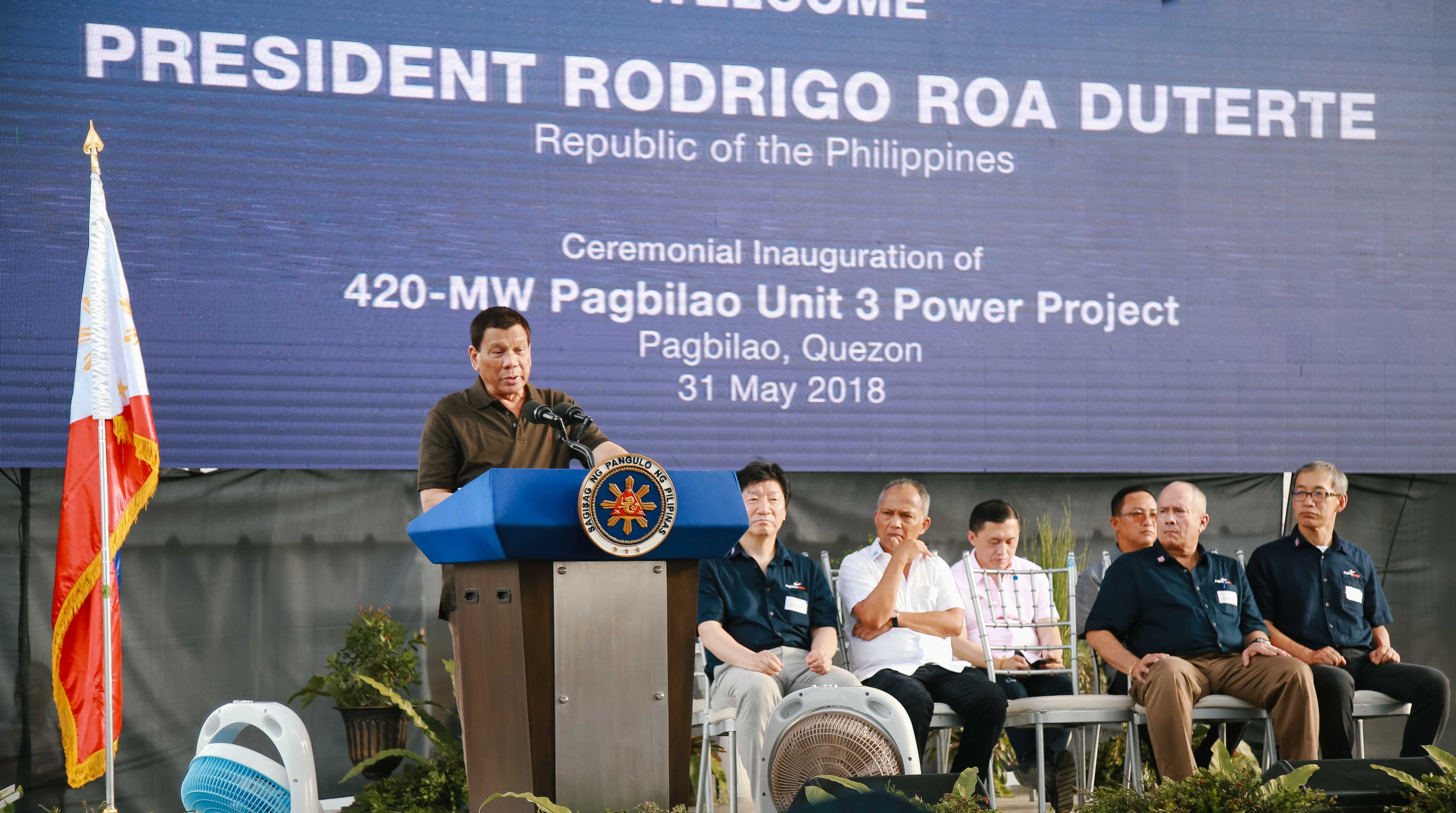TeaM Energy lights up lives in remote Philippine islands and villages
It’s 6:00 PM and the formerly bright sky is slowly turning red-orange as dusk begins to unfold in the off-grid area of Silaki, an island six kilometers from the mainland Bolinao, Pangasinan.
By the shore, Marife Padilla eagerly awaits the return of her husband from a whole day of fishing in the vast sea, clutching a rusty flash light in one hand, and a modest ice chest made of Styrofoam on the other, where she will place her husband’s catch of the day.
As they reach home, Marife turns on the light — powered by solar energy — in order to begin the evening’s activities of cleaning the fish and other household chores.
Two years ago, their living conditions in the remote fishing village were quite different. There wasn’t any light to turn on in Marife’s home; and their only source of light is an old kerosene lamp to guide them through the night.

Residents of Silaki Island in Bolinao, Pangasinan depend on fishing as their main source of income.
Lighting up islands, villages
In 2016, TeaM Energy Corporation (TeaM Energy), the largest Japanese investment in the Philippines, through its Corporate Social Responsibility arm, TeaM Energy Foundation (TEFI), provided the residents of Silaki Island solar home systems which are equipped with a solar panel and LED lights. In 2018, TEFI, together with its partners, turned over a 6.4 kilowatt solar battery charging station which the residents can use to power their small appliances at home.

A resident of Silaki island receives a brand new solar home system from TeaM Energy.
Silaki Island is only one among the many far-flung, off-grid areas in the Philippines that were powered through solar energy by TeaM Energy. To date, a total of 15,876 households, benefitting over 75,000 individuals all over the country have been given access to electricity mostly through TeaM Energy’s solar electrification program.
From 2011 to the present year (2018), TEFI has energized through solar power a total of 7,086 households. This includes areas in the Polilio group of islands, Infanta, and Pagbilao in Quezon; Silaki Island and Sual in Pangasinan.
The provinces of Quezon and Pangasinan are host to two of the power generating facilities that TeaM Energy operates; the 735 MW Pagbilao Power Station in Quezon, and the 1,218 MW Sual Power Station in Pangasinan.
Outside of its host provinces, off-grid villages in conflict areas in the Autonomous Region of Muslim Mindanao (ARMM) and the Visayas have also benefitted from this program.
Apart from its initiative to provide off-grid homes with solar energy, TEFI’s traditional flagship electrification program— connecting villages to the grid using poles and cables– that was started by its predecessors has so far energized over 1,000 barangays nationwide, benefitting an estimated 1.5 million individuals at a cost of over Php 1.5 billion. This program has installed over 11,000 kilometers of electric cables throughout the country.

Residents of Barangay Balimbingan in Sultan Kudarat work hand in hand in setting up a solar panel in their community.
Round the clock power
From 10:00 AM to 4:00 PM, Romie Castel operates the 6.4 kilowatt solar battery charging station in Silaki Island. This new responsibility gives Romie a renewed sense of purpose in the otherwise quiet fishing village.
Residents would come and bring their car batteries in the charging station for a minimal fee – PhP 35 to be exact. These car batteries have transformed their way of life, as these are used to charge their mobile phones, power their television sets so they can watch FPJ’s Ang Probinsyano – – a village favorite; and also listen to the news on the radio during the day.
For people living in urban cities, since energy permeates most aspects of life, and the fact that it is available to most, it is easy to take it for granted. But for people who for most of their lives were isolated and off-grid, the gift of energy is transformative. It allows them to break their geographical isolation to connect to a wider world.

The 6.4 kilowatt solar charging station in Silaki Island, turned over by TEFI, in partnership with the Asian Development Bank and Korean firm Electronic Life Technology, is being used by the residents to operate their small appliances at home.
In Padre Burgos, a remote fishing village in Quezon Province, Aira Monreal studies to prepare for her upcoming exams. Aira said, “before, I only used a kerosene lamp so I can read my books. It is very difficult as the gust of wind often fans out the flame. Right now, with the solar home system in place, it’s a lot easier. I can read better and focus on my lessons well.” Now, aided by the bright glow of an LED bulb powered by solar energy, Aira can extend her studying hours during the evening.
The same goes for public elementary school students of General Nakar, Quezon where recently, 1,111 units of portable solar lamps were distributed to the students who reside in off-grid communities. These solar lamps can last for five to eight hours in operation and may be used by the students when studying for their lessons during the evening.
“Through these solar lamps, we do not only aim to give brighter evenings to the students residing in off-grid communities, but a brighter future as well,” says Ricky De Castro, Executive Director of TEFI.

The solar lamps received by public elementary school students in General Nakar, Quezon can last from five to eight hours in operation.
All at once, the solar street lamps turn on in Barangay Añato, Pagbilao, Quezon as day turns into night in this community. And for residents of the said barangay, walking along the streets in the evening now feels a lot safer. The community has never felt more alive as the solar street lamps illuminate their surroundings, giving the children a chance to play outside even after dinner, and the older residents the time to gleefully exchange stories outside their homes after a day of hard work in the fields.
Corporate social responsibility: beyond compliance
By law, for every kilowatt hour produced by energy generation companies, one centavo is deposited in a special fund managed by the Department of Energy. This is then used for development projects divided among the host barangay, local government unit, province, and region. Known as Energy Regulation 1-94, this provision in the Electric Power Industry Reform Act (EPIRA) ensures that communities benefit from the presence of a power plant. Since the start of the operations of TeaM Energy’s power plants, approximately Php 1 billion in funds so far has been generated. This includes funds that have been utilized and those that are currently available.
Going beyond what the law requires, TeaM Energy, apart from community benefits under ER 1-94 and its electrification programs, has actively worked with the barangay, local, and provincial government units in identifying areas in need of intervention. This has resulted in the construction of new classroom buildings, feeding programs, medical missions, and full college scholarship programs which have helped marginalized students from host provinces graduate from college and help their families move up in life.
Japan movement
The Japanese government has shown a firm commitment to partner with the Philippines in moving the country forward. Just recently, the Japan International Cooperation Agency (JICA) extended to the Philippine government a Php 51 billion soft loan for the construction of the Metro Manila Subway Project (Phase 1) that is expected to help ease traffic congestion in Metro Manila.
Such cooperation is being mirrored by TeaM Energy in its undertaking of initiatives to uplift the lives of Filipinos through high-impact CSR programs.
“We see the undeniable working synergy between the Japanese and Philippine governments. From our end, as a private sector investor, we pledge to do our share to help the administration of President Duterte improve the lives of Filipinos,” said John V. Alcordo, Chairman and CEO of TeaM Energy.
TeaM Energy is considered as the largest Japanese investment in the Philippines with close to USD 4 billion invested in the country. While having Japanese roots, the company is run by a predominantly Filipino work-force.
Energy for a rising economy
By the very nature of its business, which is to generate reliable and cost-efficient electricity to address the country’s development needs, TeaM Energy is already partnering with government in moving the nation forward.
Alcordo emphasized that the present administration’s emphasis on big ticket infrastructure projects will jump-start economic activity, creating income and employment opportunities for Filipinos.
“Along with the expected economic growth is an increased demand for energy. We recently began operating our 420 MW Pagbilao Unit 3 power project. This will surely help address the country’s energy needs, moving forward,” he points out.

President Rodrigo Duterte leads the inauguration of the 420-MW Pagbilao Unit 3 Power Project in Quezon
The Pagbilao Unit 3 project, inaugurated by President Duterte last month, is TeaM Energy’s joint venture undertaking with Aboitiz Power. The multi-billion peso power facility is expected to help meet the rising demand for electricity supply in Luzon. It is located in, and is adjacent to the existing Pagbilao units 1 and 2 operated by TeaM Energy in Quezon province.
With this new project on stream, TeaM Energy has a total generating capacity of over 2,000 MW, which represents more than 15% of the total generating capacity of Luzon.
Moving forward together
As the economy of the Philippines rises, so does the demand of the country’s energy needs; and TeaM Energy is doing its part to make sure that these needs are met.
Most importantly, TeaM Energy goes beyond to make progress more inclusive, and felt by Filipinos who are residing in the remotest of villages and islands in the Philippines.
Back in Marife Padilla’s home in Silaki Island, she and her husband pour a generous amount of ice over the fish that they are about to sell at the wet market the following day – – today’s catch was a good one.
“Thanks to the light brought about by our solar home system, working during the evening has become very convenient,” narrates Marife. “No more finding our way in the dark,” she ends.
ADVT